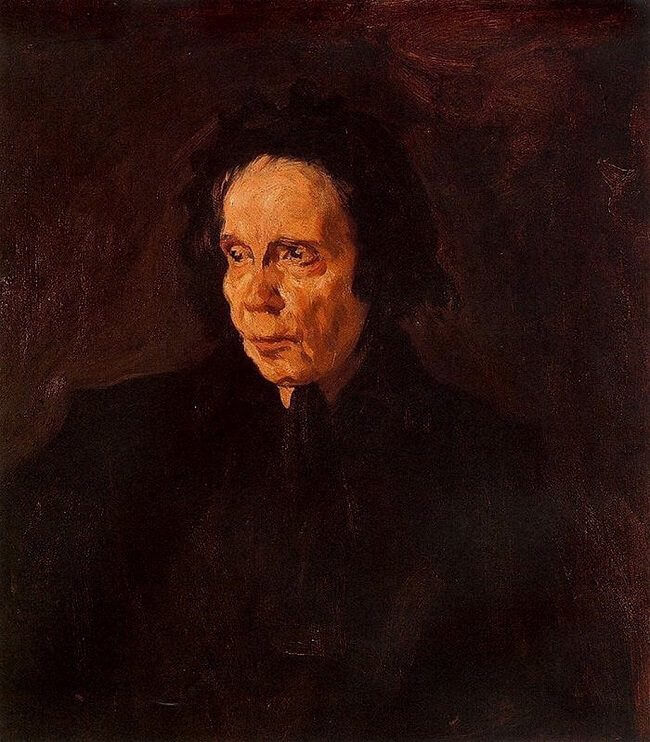Portrait of Aunt Pepa, 1896 by Pablo Picasso

The Portrait of Aunt Pepa is one of the milestones in young Picasso's portrait work. The model is Josefa Ruiz Blasco (1825-1901), his father's sister. The undated oil was painted in 1896 during one of Picasso's study trips to Malaga with his family.
The play of light highlighting the face from the dark clothes and shadow backdrop, and the more outlined treatment of the latter to favor concentration on the facial expression, make this work a surprisingly deep psychological portrait.
The raw realism of the face, as well as the chromatic and light treatment, denote a clear influence from Spanish portrait tradition (especially, Diego Velázquez).
The freedom and expressive fluidity of the lines, based on very free and flowing brushstrokes, also reveal both a quick and a virtuoso creation: Sabartés even stated that the portrait was done in less than an hour, fanning once more the legend of young Picasso. In any case, the swift execution seems equally likely to be related to a more prosaic reason - Josefa Ruiz did not like people painting her and her initial refusal, accompanied by Picasso's lack of motivation, delayed the work's production for a year - a work commissioned by his uncle Salvador.
















